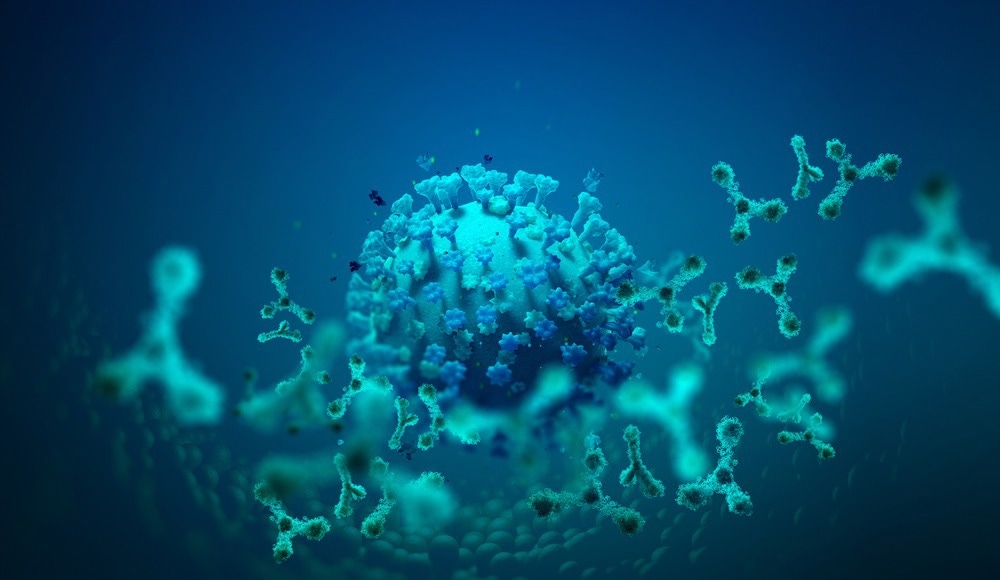A recent study published in The Journal of Infectious Diseases tested equine polyclonal antibodies against severe acute respiratory syndrome coronavirus 2 (SARS-CoV-2).
 Study: Potent Neutralizing Activity of Polyclonal Equine Antibodies against SARS-CoV-2 Variants of Concern. Image Credit: Yurchanka Siarhei/Shutterstock
Study: Potent Neutralizing Activity of Polyclonal Equine Antibodies against SARS-CoV-2 Variants of Concern. Image Credit: Yurchanka Siarhei/Shutterstock
Background
SARS-CoV-2, which causes the coronavirus disease 2019 (COVID-19), has globally caused more than 577 million cases and 6.4 million deaths to date. The continued transmission of SARS-CoV-2 has led to the emergence of mutant variants of concern (VOCs). SARS-CoV-2 Omicron, the latest VOC, exhibits enhanced transmissibility and evades neutralization by antibodies, which is a major impediment to curtailing the COVID-19 pandemic.
Multiple monoclonal antibodies (mAbs) for COVID-19 treatment in select patients have been approved for emergency use by the European Medicines Agency (EMA) and the United States (US) Food and Drug Administration (FDA). Still, most mAbs have been inefficacious against Omicron; besides, several novel sub-variants of Omicron have emerged lately, which exhibit varying sensitivities to mAbs, complicating the application of antibody therapeutics.
Heterologous immunoglobulins have been used as therapeutics for rabies, tetanus, and envenomation. Fab’entech’s FBR-002 is a clinical-grade product of purified equine polyclonal antigen-binding fragments [F(ab’)2] that recognize the spike protein of SARS-CoV-2. It is a potential candidate for treating patients hospitalized with COVID-19.
It targets multiple spike epitopes, minimizing escape risk if new mutants emerge. The lack of the fragment crystallizable (Fc) region limits the risk of antibody-dependent enhancement (ADE) and other associated complications compared to whole immunoglobulins.
The study and findings
In the present study, researchers evaluated in vitro neutralization of SARS-CoV-2 VOCs by FBR-002. Three French trotter horses were hyperimmunized with whole spike protein. Horses lacked anti-SARS-CoV-2 antibodies pre-immunization, and blood samples were obtained regularly after immunization.
Pooled plasma was subject to purification to obtain F(ab’)2 fragments. Purification involved 1) anion-exchange chromatography, 2) hydrolysis of whole immunoglobulins to remove Fc fragments, and pasteurization at 60 °C for 10 hours. The final product was filtered through 0.2 microns and stored at 5°C.
Neutralization assays were performed against SARS-CoV-2 VOCs like the Alpha, Beta, Gamma, Delta, and Omicron [BA.1, BA.2, BA.2.12.1, BA.4/5] variants with SARS-CoV-2 D614G spike as the reference, using the SARS-CoV-2-pseudotyped recombinant vesicular stomatitis virus-luciferase (PSV) system.
Additionally, a microneutralization assay was performed using authentic SARS-CoV-2 D614G and Delta, BA.1, and BA.4 variants. FBR-002 showed high neutralizing activity against all SARS-CoV-2 VOCs in the (PSV) neutralization assay. The neutralization titer for D614G (reference) was 546827 IU/ml and ranged from 0.5 x 105 to 6 x 105 IU/ml for SARS-CoV-2 VOCs.
The neutralization titers for SARS-CoV-2 BA.1, BA.2, BA.2.12.1, and BA.4/5 were 107355 IU/ml, 127229 IU/ml, 87193 IU/ml, and 65082 IU/ml, respectively. The neutralization of select SARS-CoV-2 variants in the microneutralization assay was similar to that in the PSV assay.
Extrapolating the estimates of neutralization obtained with FBR-002 based on the immunoglobulin content would roughly translate to a half-maximal inhibition concentration (IC50) of 81.9 ng/ml for the D614G variant in the PSV assay and 87.5 ng/ml in the microneutralization assay.
Likewise, it would have been 668 ng/ml for Omicron BA.4/5 in the PSV assay and 734.2 ng/ml for the BA.4 variant in the microneutralization assay, which is significant given the limited availability of mAbs against Omicron sub-variants.
Conclusions
The authors demonstrated potent neutralization of SARS-CoV-2 by FBR-002, which was superior to the neutralizing potency attained after SARS-CoV-2 infection or vaccination. The neutralizing titers were above 105 IU/ml for most VOCs. Notably, compared to the D614G spike, Omicron (sub-)variants had the highest decrease in neutralization.
A 6.3- and 8.4-fold decrease in neutralization was observed for Omicron BA.4 and BA.4/5, respectively, relative to D614G in the PSV assay. Similarly, the team observed an 8.4-fold reduction in the neutralizing titers of the BA.4 variant relative to the D614G variant in the microneutralization assay. In comparison, this (titer) was two-fold higher than the neutralization titers attained with sera from vaccine-boosted naïve/convalescent individuals.
The high titers of antibodies targeting different conserved epitopes in the spike protein might plausibly explain the remarkable breadth of neutralizing activity observed with FBR-002. The potency and breadth of polyclonal antibody preparations are vital to targeting the highly evolving SARS-CoV-2. Given the ongoing transmission, it is likely that newer SARS-CoV-2 variants might appear in the future. Altogether, these results suggest that FBR-002 could be a novel therapeutic approach against SARS-CoV-2.